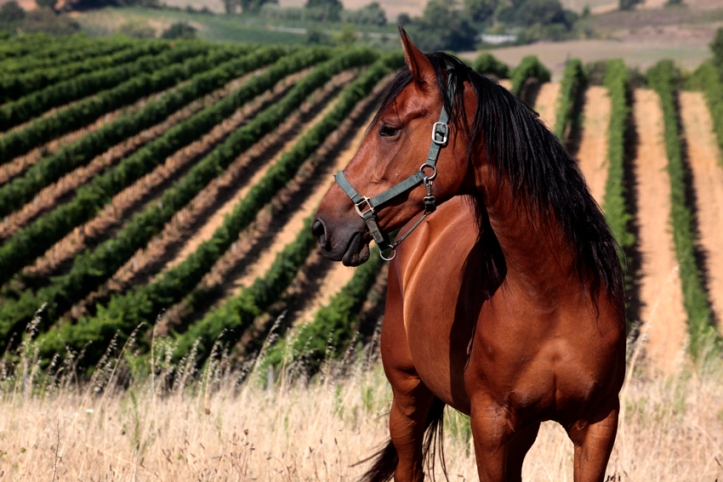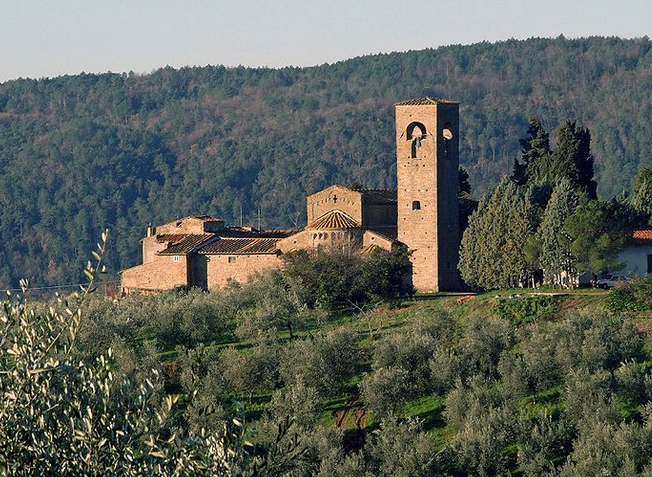
This month’s #ItalianFWT is focusing on Super-Tuscans thanks to Jill Barth of L’Occasion. Here is the preview post where she explains what brought her to want to write about this topic. I’m glad that she decided to shine a light on these wines again because it’s something I have been thinking about too.
For starters, as we know from our own experience, reading, and from Jill’s post Super-Tuscans are wines that came about in the 1970s and were much heralded as something a cut above Tuscan wine hence the name Super-Tuscan. They tend to be made with a combination of Central Tuscany’s premier grape, Sangiovese, and an international grape variety such as Cabernet Sauvignon, Merlot or other. They are often bigger and bolder wines, often with a lot of oak. At least in the past this was true. They also had a very high price tag and were made by some of the most famous families from Tuscany.
Being made with an international grape variety in hefty percentages, they also were outside of the highest designation of origin or DOC/DOCG (DOP). They were labeled with the less prestigious IGT or indicazione geographica tipica label. In the 1970s this was a big deal since regions worked so hard to get the DOC/DOCGS. Today much less so.

What has changed?
- For starters, there are many more DOCGs today in Italy than in the 1970s and many more IGTs too. This means producers have more choice of how to label their wines and that the rules for what is a prestigious area have increased.
- Many of Tuscany’s own DOCGs now allow much higher percentages of international grape varieties than they did in the past. Many a Vino Nobile di Montepulciano DOCG, Morellino di Scansano DOCG, Valdarno di Sopra DOC, Bolgheri DOC, Pomino DOC, Carmignano DOCG Suvereto DOCG, Val di Cornia DOCG, Cortona DOC, and others may or must contain percentage of international grape varieties.
- Some of these areas such as Carmignano DOCG, Pomino DOC, Valdarno di Sopra are areas that were designated historically as special areas to grow grapes by Cosimo III de’ Medici Grand Duke of Tuscany as three of the superior wine producing areas of Tuscany and granted special legal protections in 1716. The producers of the Carmignano region blended Sangiovese with Cabernet Sauvginon well in the 1800s long before Super-Tuscans were a thing.
- Exploration of the terroirs of certain areas in Tuscany such as the Bolgheri/Suvereto/Val di Cornia/Cortona areas have shown that international grape varieties grow very well in their soils

So now that we’ve established that these wines have a history in Tuscany, long before the 1970s, let’s do away with another myth, just because something is popular and famous, doesn’t mean you have to like it or be against it to be a traditionalists. These wines have a long tradition in Tuscany and by long, I mean three centuries.
Have I often thought only wines made with indigenous grapes were best in all Italian regions? Yes. Have I been thinking and writing about Italian indigenous varieties for over 12 years, yes. Sangiovese is my favorite grape hands down.
Does that mean I will turn away from a Tignanello, Sassicaia, Solaia, Ornellia, Masseto or others? Absolutely not. They are gorgeous, beautifully made wines. Would I pay the price tag for one of them, again, probably not but if one is offered to me, I jump at the chance to taste them again.
Also, there are many brands that make what could be called Super Tuscans but don’t carry that high price tag so if you’ve never had one of the icons but want to know what we are talking about, do a search and you will find many options including some with a lower price tag.
Wine snobbery works both ways, those who only want the most expensive and those who only want wines that are made on a two hectare property by one producer. I am in neither camp. I love well made wines in general and am a friend to all of them.
Join our Twitter chat on Saturday, June 27th at 10am central time. All are welcome, just hit up the hashtag #ItalianFWT.
Here’s what we have planned:
Super Tuscans, Take-Out Pizza, and a Spicy Summer Salad | This post comes to you from the kitchen magician behind Culinary Adventures with Camilla.
Super Tuscan Wine Pairing: I Sodi di San Niccolò and Scallop Shrimp Pasta with Tomatoes and Mushrooms | A tempting pairing is coming your way from The Wine Chef.
Super Tuscans: What’s It All About? | This question will be answered by the founder of #ItalianFWT, VinoTravels.
A Stop at Brancaia and a Pizza Night | A perfect combo from California’s own Somm’s Table.
Super rating, super price – Is this Super Tuscan super? | The question will be answered in full by My Full Wine Glass.
Have You Tried These Super Tuscans? | Get the opportunity to explore with The Wining Hour.
There’s no need to Fear, Super Tuscans are here! | Hear the heroic call from Our Good Life.
Are Super Tuscans still relevant and worth my time and money?| Find out all there is to know with Crushed Grape Chronicles.
Cooper’s Hawk: A Great Concept and a Super Super Tuscan | Get the inside scoop on this treat from A Day In the Life on the Farm.
I Colazzi and a Big Ol’ Steak | Don’t miss this outstanding combo from Joy of Wine.
No Super Tuscans for Me! | The point of view from FoodWineClick is super clear.
Super Tuscans: Keep Your Sassicaia, I’ll take the Sangiovese | A message from WinePredator to all readers.
Supertuscan Is All About The Name, Not In The Wine | According to an Italian wine expert, GrapeVine Adventures.
and I’ve penned Looking Beyond the Name Super-Tuscans on Avvinare.


I like your take…well made wines are well made wines, no matter what grape they are made from!
[…] Looking Beyond the Name Super-Tuscans | Insight from Avvinare that goes deeper than the title. […]
I too like your take. You bring such a wealth of knowledge on this subject and a bit of an insider perspective that I truly appreciate. I was surprised that I enjoyed my Caiarossa as much as I did. I had a preconceived notion of Super Tuscans that changed when I put my nose in the glass. I still can do without all the hype and the cost, but I realize I was writing off an entire style, without tasting it first hand.
[…] Looking Beyond the Name Super-Tuscans |Avvinare […]
[…] Looking Beyond the Name Super-Tuscans | Insight from Avvinare that goes deeper than the title. […]
I am sorry to disagree with the content of this post. Supertuscany came about in the 70, but the actual name came after, not to indicate wines made with international grapes as well as sangiovese, but to indicate great wines that did not meet the DOC/DOCG requirements. In the 70′ and 80′ there was great emphasis on the appellation, appellation was synonym with quality, however, appellations limited the winemaker’s choices, so the first supertuscany were bottled as table wine, which in turn until now, indicated poor quality wines. Nowadays, supertuscany mainly comes as IGT, except for Sassicaia that has its own DOC, and have lost its original meaning. Each winery in Tuscany produces at least one wine that can fit the supertuscany definition, where the winemaker is actually allowed to follow the vintage, the grapes and its own philosophy. For a bit more information on the subject https://www.italyabroad.com/grapes/supertuscany
I guess I fit one of your wine snob choices, not being interested in international varieties grown in Italy. Oh well, all the more of those wines for someone else. Like I said, winemakers should make the wine they want, but I can vote with my pocketbook too.
I like your evenhanded approach to Super Tuscans, Susannah, and refusal to get caught up in wine snobbery no matter how it expresses itself.
I’m with you…..There are so many different wines out there that I’m not going to limit myself.
I completely with you here. I generally find the wines from the indigenous grapes for interesting, but a beautifully made wine is a beautifully made wine. And you bring up a very good point in reminding us that some of these international grapes have been in the area for several centuries.
Such a great perspective providing what has changed and I agree with your opinion. I wouldn’t pay the price tag, but will always enjoy it if offered. There are so many other great wines at reasonable price points to pay.